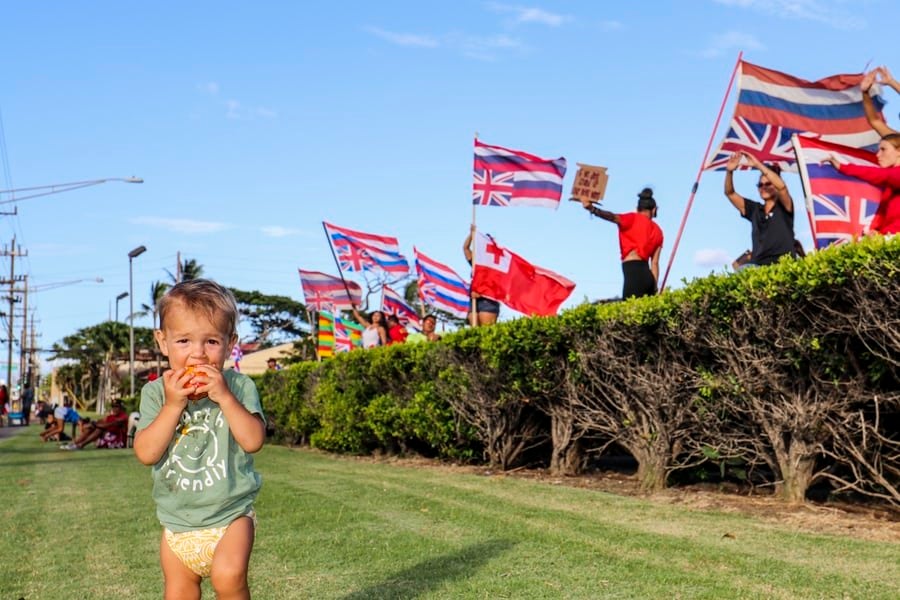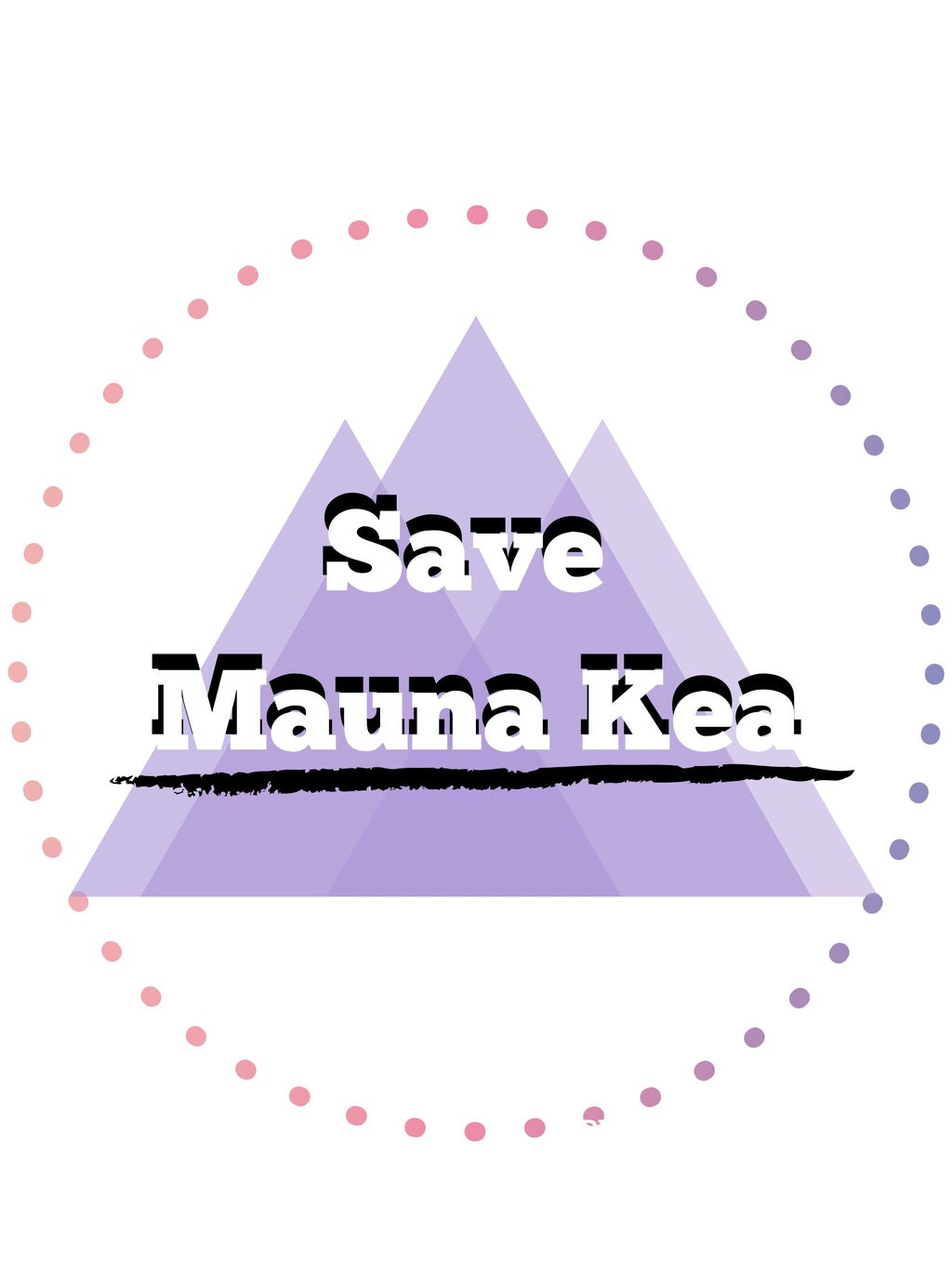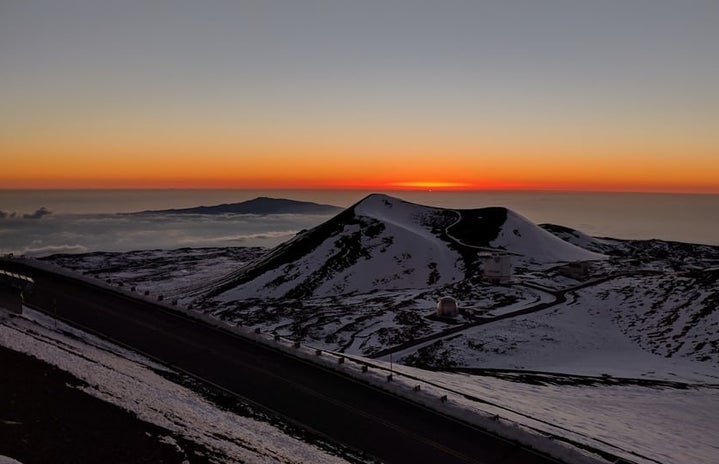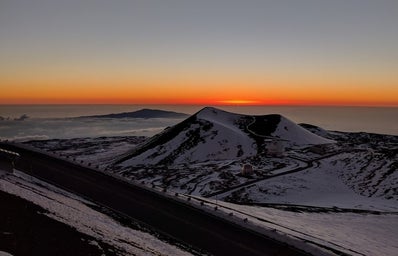1968 was a year of political turmoil. Among civil rights activism, global student protests, and the loss of leaders like MLK Jr. and Robert F. Kennedy (RIP), this year was also the mark of a long and ongoing battle for land and indigenous rights in Hawaii.
In 1968, the state of Hawaii and the official Board of Land in the Department of Land and Resources voted to issue a lease to the University of Hawai’i that permitted the construction of one observatory. This observatory was to be built on Mauna Kea, the largest mountain in the Pacific. As a large body of land on the Big Island of Hawaii, Mauna Kea was seen as the perfect site for observations and astronomical research because the atmosphere above the mountain is very dry and ideal for measuring infrared. Likewise, at over 4000 meters tall, the mountains peak reaches just above the cloud line to ensure clear visuals of the sky. In 1970, this first proposed telescope was built.
Immediately, the construction of this telescope was met with opposition. Native Hawaiians and Hawaiian residents, alike, felt the development of an observatory on top of Mauna Kea would pose threats to both their culture and traditions as well as the natural environment of the mountain. These feelings and opinions, however, were overlooked and over the next 20 years the Board of Land authorized another contract allowing an additional 13 telescopes to be built before the year 2000. By 1999, a total of six telescopes were completed on the mountain with plans for eight more to be added by 2002. This rapid development of Mauna Kea alarmed many people and soon tensions began to build. Complaints on the Board of Land’s mismanagement of land were made, investigations on the environmental impact of construction began, and various lawsuits were filed. The people of Hawaii were concerned and fed up and for good reason!
To many, Mauna Kea is more than just a mountain or a scientific holy grail. It is a history. Polynesian folklore tells stories of how Maunakea was the child of Papa– mother Earth– and Wākea– father of the Sky or Heaven, who were both deities of creation. Mauna Kea as a place then served as a bridge between the two realms and also symbolized the beginning of life. For this, indigenous peoples worshipped Mauna Kea and treated it with the utmost respect. Additionally, in the winter months when snow presented itself on the mountain tops, Native Hawaiians paid respect to Poliʻahu, Snow Goddess of Hawaii, who blessed the islands with snow and ice. These myths and stories became a large part of Hawaiian culture and influenced many. Some royalty underwent a difficult yet humbling trek to the mountains peak to rejuvenate and pay homage to their ancestors and Gods. Families honored their loved ones with spiritual burials and the creation of totems and other memorial altars.
Today, this love and respect for Mauna Kea persists and is stronger than ever, especially with all of the controversy of the Thirty Meter Telescope. The Thirty Meter Telescope (TMT) is the newest proposed project to be built on Mauna Kea. First proposed in the late 2000s, it would be the 14th telescope in this long history of land development and mismanagement. The TMT would also be the largest land observatory today allowing a great deal of research to take place. As stated on the TMT official website, “The TMT telescope will provide extremely sharp images that will allow astronomers to see much fainter and more distant objects than possible with existing telescopes, and to study them in greater detail. This represents the possibility of pushing our vision farther into space and our understanding farther back in time to help answer fundamental questions about the universe. It is very likely that TMT will enable discoveries that we cannot even begin to anticipate today.” However, for residents of Hawaii and those deeply engaged with Hawaiian culture, these insights do not seem to outweigh their concerns and should not be prioritized because they are situated in academia. Some of the current concerns Native Hawaiians and other involved parties have include: how this telescope will desecrate sacred land if built on the summit or near altars, how building one telescope invites future projects to be constructed, and how natural resources will be disrupted. These concerns led to widespread protest and objection in Hawaii and around the world. So when construction was announced to begin in July 2019, the public was determined to shut it down and organized an act of civil disobedience to block the roads leading up to the construction site, preventing any materials or workers from getting to and working on the project.

This issue is one that is deep rooted and likely will not be resolved in a neat and exact way. It can not be simply explained in a summary of the history and a few researched points of the arguments. It must be thought about and realized via in depth research and understanding of the indigenous perspective. This article only touches the surface, so look into the conflict using sites like protectmaunakea.net and similar activist sites. Also take a look at social media pages like @protectmaunakea on Instagram to stay updated on events and the project’s development. Just as 1968 was a year for civil unrest and protest, 2020 will be a year for community action and change. Protect Sacred Land, Protect Indigenous Rights, Protect Mauna Kea.




